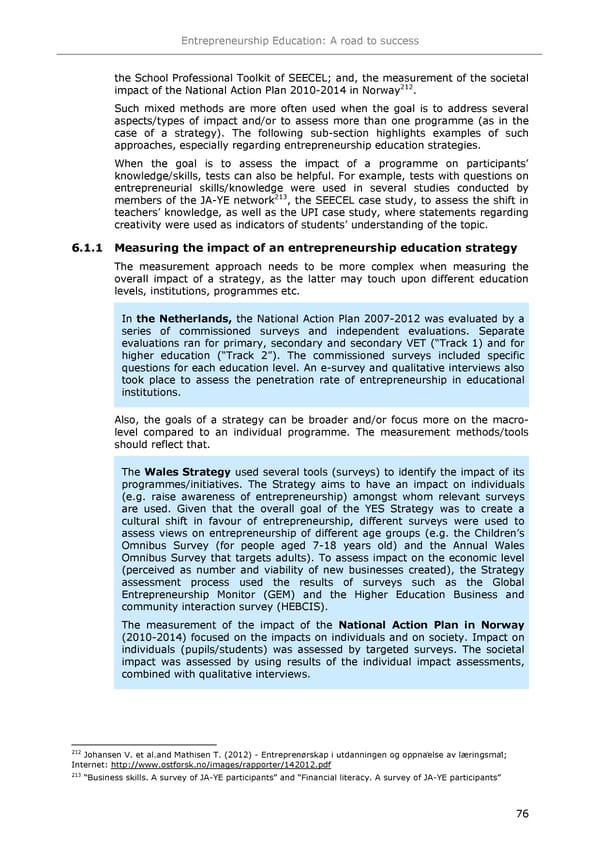Entrepreneurship Education: A road to success the School Professional Toolkit of SEECEL; and, the measurement of the societal 212 impact of the National Action Plan 2010-2014 in Norway . Such mixed methods are more often used when the goal is to address several aspects/types of impact and/or to assess more than one programme (as in the case of a strategy). The following sub-section highlights examples of such approaches, especially regarding entrepreneurship education strategies. When the goal is to assess the impact of a programme on participants9 knowledge/skills, tests can also be helpful. For example, tests with questions on entrepreneurial skills/knowledge were used in several studies conducted by 213 members of the JA-YE network , the SEECEL case study, to assess the shift in teachers9 knowledge, as well as the UPI case study, where statements regarding creativity were used as indicators of students9 understanding of the topic. 6.1.1 Measuring the impact of an entrepreneurship education strategy The measurement approach needs to be more complex when measuring the overall impact of a strategy, as the latter may touch upon different education levels, institutions, programmes etc. In the Netherlands, the National Action Plan 2007-2012 was evaluated by a series of commissioned surveys and independent evaluations. Separate evaluations ran for primary, secondary and secondary VET (
 Entrepreneurship Education Page 79 Page 81
Entrepreneurship Education Page 79 Page 81